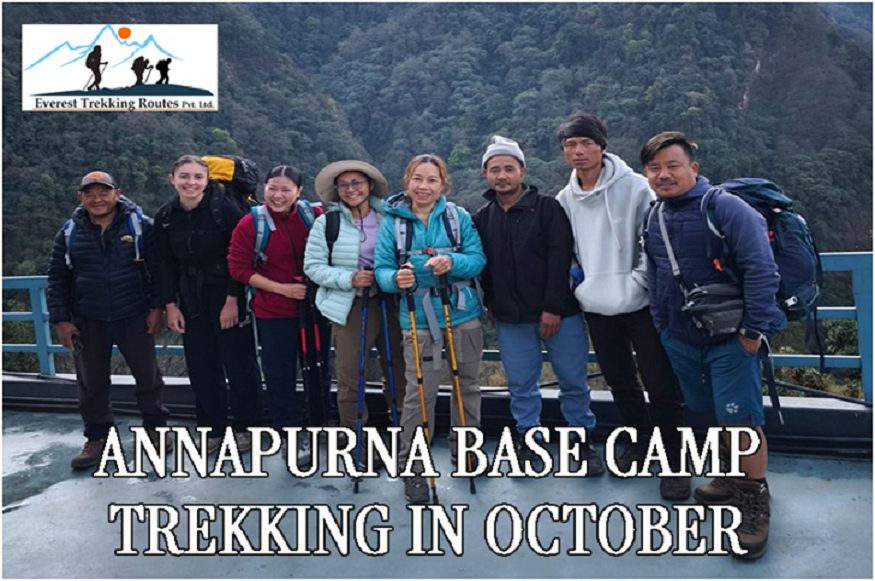
Trekking in Nepal is like a dream that doesn’t go away. You think one time, but then you keep thinking again and again. The mountains, the air, and the people smile. All feel real but also like a story. There are four treks that we talk about. Annapurna Base Camp Trek, Manaslu Circuit Trek, Langtang Valley Trek, and Everest Three Pass Trek. Each one is different, but all give you a happy heart and tired legs.
The heart of Annapurna Base Camp
The Annapurna Base Camp Trek is like a big stair climb into the clouds. You walk from the green rice field, then slowly up to the forest, then finally to snowy land. The mountain stays in front like a giant wall. You can see Fishtail Mountain, Annapurna South, and many more.
People in villages smile when you walk past. They offer tea and dal bhat and always ask where you come from. The trail has stone steps. so many steps. you feel it in your knees. But each step takes you closer to base camp.
At night, stars shine bright. You can hear the river far below. And the morning at base camp is magic. The sun hit the snow peak and turned gold. All quiet. only the wind and the little prayer flag sound.
Manaslu Circuit Wild Beauty
The Manaslu Circuit Trek is not as busy as Annapurna or Everest. It feels more wild, more remote. You start low, near rice terraces and warm weather. Then you go up, slowly, through big valleys, small villages, and mountain passes that are very high.
You meet people from the Gurung, Tibetan, and other groups. They still live the same way for a long time. old houses, small farms, yaks in the fields. The trail here is sometimes rough, but the view is worth every hard step.
The big day in the Manaslu Circuit is crossing Larke La Pass. Snow under your boots, wind cold on your face. But when you reach the top, you see mountains on all sides. You feel small but also strong because you make it there with your own legs.
Langtang Valley’s friendly mountains
The Langtang Valley Trek starts close to Kathmandu but feels far. After driving to Syabrubesi, you start to walk along the river. green forest, monkeys jumping in trees, and small bridges over water.
Villages along the Langtang Valley are friendly. People invite you in, they talk, and they share their food. You walk and see snow peaks at the end of the valley. Each day you get closer until you reach Langtang Village and Kyangjin Gompa.
Up there, you can climb small hills or peaks to see all around. glaciers, ice, and endless sky. It is not too hard a trek, but it gives a big-hearted feeling.
Everest Three Pass Challenge
The Everest Three Pass trek is for people who want it all. not just Everest base camp. Here, you cross three high passes: Kongma La, Cho La, and Renjo La.. Each one gives a different view and different challenges.
You see lakes so blue they don’t look real. You walk near glaciers, cross rocky trails, and sometimes snow. Sherpa villages welcome you with tea and a warm stove.
The air is thin here. You walk slowly, breathing deeply. But when you stand on top of a pass, prayer flags around you, mountains in all directions, you know why you come.
How these treks feel together
If you think about it, these four treks are like four chapters of one big story. Annapurna Base Camp is the welcome chapter. friendly, warm, and beautiful. Manaslu is the adventure chapter, wild and far. Langtang is the heart of a chapter, simple and pure. Everest Three Pass is the grand ending, full of challenge and glory.
Walking these treks, you see how Nepal is not just a mountain. It is people, culture, and history. It is the tea house where you meet new friends. It is the sound of yak bells in the morning. It is the smell of wood fire at night.
Walking the trail each day
Some days are short. Maybe only 3 or 4 hours. Some days are long, 8 hours or more. Sometimes the sun is strong, and sometimes snow falls. Sometimes you are tired, but then a view makes you forget.
On Annapurna, you might walk through a bamboo forest. on Manaslu, maybe along a cliff with a river far below. on Langtang, across a meadow with yaks grazing. on Everest, over an icy pass with wind like a knife.
You eat dal bhat, noodle soup, and pancakes. drink tea all day. sleep in simple rooms, sometimes cold.
People you meet
These treks are not only mountains. You meet porters, guides, villagers, monks, and other trekkers. Each has a story.
A porter carries a heavy load but still smiles. A guide points at the peak and tells the name. A villager offers hot soup when you are cold. A monk gives a blessing. A trekker shares chocolate with you at the top of the pass.
These small moments are big in memory.
Nature changes every step.
Nature changes when you walk. In Annapurna, you start with rice terraces and end with snow. in Manaslu, from jungle to high glacier. in Langtang, from forest to alpine meadow. in Everest, from rocky valleys to icy passes.
Flowers bloom in spring. Rhododendron trees are full of color. In autumn, skies are clear. In winter, snow makes everything white.
Challenge and reward
These treks are not easy. You feel tired, you feel cold, and you sometimes think, “Why am I doing this?” but then you see a sunrise over the Himalayas, and you know why.
Every step up is hard, but every view is a gift.
Mixing the journeys
Some people do only one trek. But if you do more, you understand more. You see how each part of Nepal is different but the same.
Annapurna gives you a taste of classic trekking. Manaslu gives you quite a wild experience. Langtang gives you a close heart. Everest gives you a high challenge.
The feeling after
When you finish, your legs rest, but your mind still walks on the trail. You remember the cold mornings, the tea steam, and the crunch of snow.
You remember faces of people you meet. You remember the smell of wood smoke. You remember the mountain standing silent, forever.
And maybe, you start to plan your next trek.
Seasons for these treks
The best time is autumn (Sep-Nov) and spring (Mar-May). In autumn, the sky is clear. In spring, flowers bloom. Winter is cold but quiet. Summer has rain but green valleys.
packing for the path
You need warm clothes, good boots, and a sleeping bag. rain jacket. water bottle. headlamp. snacks for energy.
On high treks like Manaslu or Everest passes, you need more warm gear. gloves, hat, layers.
cost and permits
Each trek needs permits. Annapurna needs ACAP. Manaslu needs a special permit and guide. Langtang needs a park permit. Everest needs local permits.
The cost depends on how you travel. A tea house is cheaper than a luxury lodge. A guided trek costs more but gives safety.
final walk in the mind
These treks together show the full face of the Himalayas. the easy, the hard, the friendly, and the wild.You walk, you sweat, you laugh, and you maybe cry. When you reach the high point, you feel small but strong.Then you come down, but the mountain stays inside you.
Contact Details
Company address: Everest Trekking Routes Pvt. Ltd.
16 Khumbu, Nayabazaar, Kathmandu, Nepal
Mobile : +977-9843467921 (Rabin)
Email: info@everesttrekkingroutes.com
URL:– www.everesttrekkingroutes.com
